Catalogue > List by artist
Browse the entire list of Rencontre Internationales artists since 2004. Use the alphabetical filter to refine your search. update in progress
Alan Phelan
Catalogue : 2021Folly & Diction | Experimental video | mov | color | 15:0 | Ireland | 2020
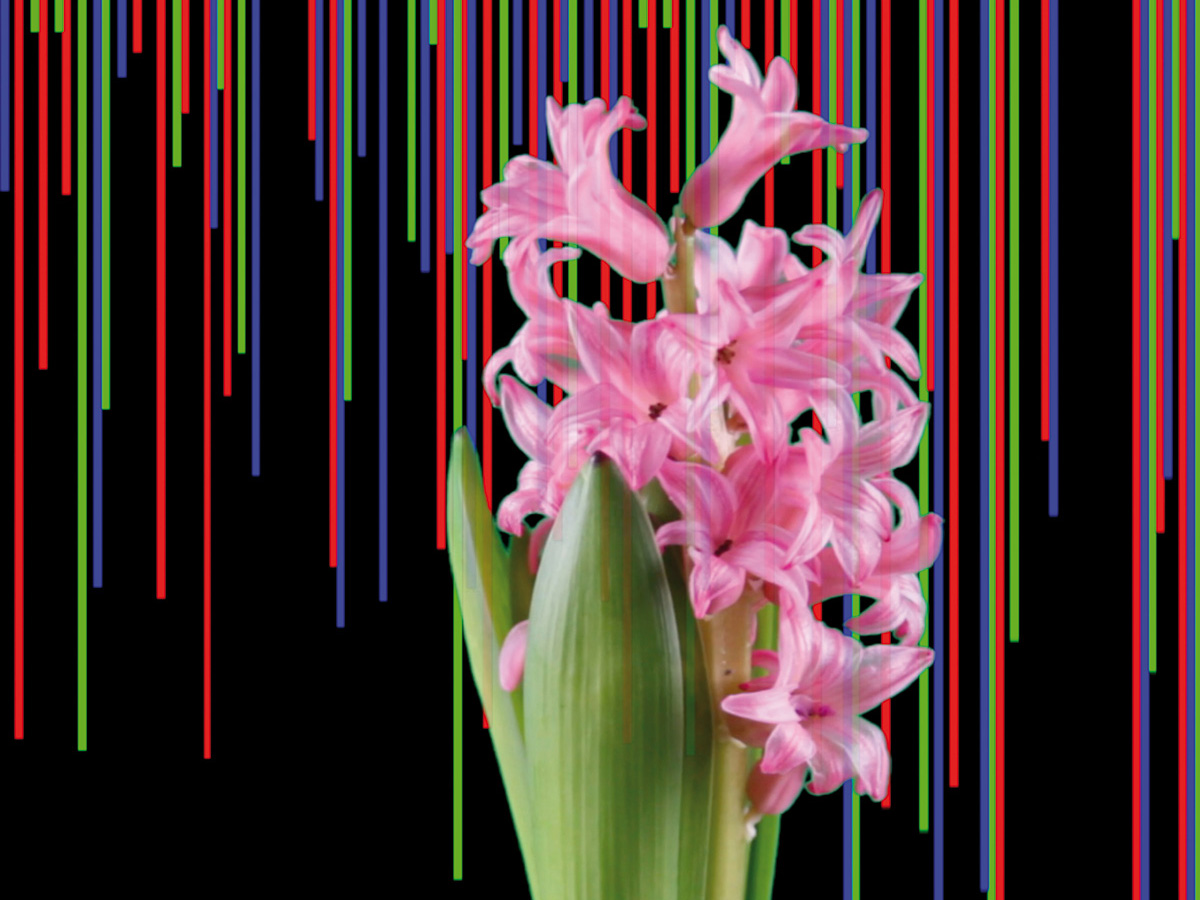
Alan Phelan
Folly & Diction
Experimental video | mov | color | 15:0 | Ireland | 2020
The title "Folly & Diction" is a homophone or stand-in for (John) Joly and (Henry) Dixon, two men who worked together on mostly forgotten science projects over a century ago in Dublin. Together they discovered, for example, how water rises through trees and Joly invented a method of additive colour photography that used red, green and blue stripes. Instead of a detailed documentary or film essay, the music video format provides the structure for this 15 minute film, with a narrative culled from the Samuel Beckett short story "First Love" and narration in the form of song lyrics, culled from the poem by Jean Genet "Fragments of the Artwork". Fan-fiction provides a kind re-narrativisation for these works, shifting genders and sexualities. The video tells an oblique story of loss, of a forgotten history, and a failed relationship with Joly's collaborator Henry Dixon. Yet it brings the analogue photography process into a contemporary sphere as audio responsive animated stripes that pulse to the music and crude video layering that draw on multiple music video tropes. The echo of history pervade Phelan’s practice; in this case, familiar tropes are masterfully used to tell a story of invention, failure and love.
Alan Phelan (b. 1968) is an artist based in Dublin whose practice began in photography and has extended into many different media and mediums with a focus on interpretation, language and collaboration. He studied at Dublin City University (1989) and Rochester Institute of Technology, New York (1994) under a Fulbright scholarship. He has had significant solo exhibitions as the Irish Museum of Modern Art (2009), the Royal Hibernian Academy (2020) and Dublin City Gallery, The Hugh Lane (2016). Gallery solos include Golden Thread Belfast (2014), The Black Mariah Cork (2011) and Mother's Tankstation Dublin (2007). Group exhibitions include Garage Rotterdam (2020), EVA International (2016), Bonn Kunstmuseum (2015), Treignac Projet (2014), Bozar Brussels (2013), Feinkost Berlin (2007), The Whitney Museum of American Art (2004). His work is included in the collections of the Irish Museum of Modern Art, The Arts Council, Trinity College Dublin, Limerick City Gallery of Art, The National Self-Portrait Collection, the Office of Public Works, Dublin City Council and several private collections. Residencies include NCAD, Dublin, CCI, Paris, HIAP, Helsinki, URRA, Argentina and FSAS, Dublin. Recent awards include Creative Ireland MCCCS (2019), an Arts Council bursary (2017) and the Hotron Éigse Art Prize (2016).
Paulette Phillips
Catalogue : 2009Marnie's Handbag | Art vidéo | dv | color and b&w | 10:0 | Canada | 2008
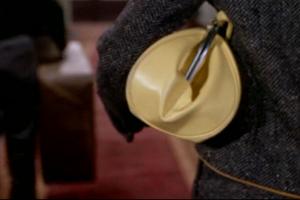
Paulette Phillips
Marnie's Handbag
Art vidéo | dv | color and b&w | 10:0 | Canada | 2008
Marnie?s Handbag is a mash-up focused on the female criminal in popular cinema. Phillips takes a historical look at how Hollywood paradoxically dresses the female felon as she attempts to avoid apprehension. Looking at sequences of women dressing to commit a crime, removing the women from their narrative context Phillips focuses on the pleasure we derive from unbridled seduction and evening the score.
Paulette Phillips? recent group exhibitions include: The Tatton Park Biennale, UK; The Canadian Cultural Centre, Paris; The Power Plant, Toronto; ZKM, Germany; Kunsthaus Graz, Austria; Heidelberger Kunstverein, Germany, Ludwig Museum, Hungary and the Palazzo della Papesse, Italy. Reviews of her recent work can be found in Art in America, ArtForum, Modern Painters and Flashart. Based in Toronto, Phillips? work is represented by Diaz Contemporary Art, Toronto and Danielle Arnaud contemporary art, London. She teaches at The Ontario College of Art and Design.
Kanchanit Phosawat
Catalogue : 2015Ghost of Ratchaburi | Experimental fiction | hdv | color | 11:49 | Thailand | 2014
Kanchanit Phosawat
Ghost of Ratchaburi
Experimental fiction | hdv | color | 11:49 | Thailand | 2014
belief is the most important product in all religion. they are trying to grow up a product. this product be express by society from people in the city or the area that make it. belief try to express identity by doctrine , behaving and architecture. buddhism`s architecture in thai language call "temple".it is a place to make and indicate progress belief or dominate belief in society even at night, temple is always decorated with colorful neon light as same as superstition is decorated. in thailand, buddhism always decorated and cite for the best thing in country. it has some word that thai people call "city of buddha" that try to express identity ,the best belief for buddhism. in thailand, if it has some people brave for criticize buddhism. other people will not agree with that. buddhism in thailand look like the tallest wall that nobody doesnt climb and cross it or draw a graffiti. this is a test movie to tell story from society. this area near the center to make belief in ratchaburi. we tell about how to belief dominate and decorate state of society?. and the best thing we try to have a question for buddhism in narrow society
Karnchanit Posawat was born on 16, October 1992 in Thailand, Bangkok. At present I am studying in final year at King Monkut`s Institute of Technology Ladkrabang, Film and Video program. I`m interested in art, my childhood spent a lot of time for reading a book. I`m going to make a movie on a final project about my relationship with my mother. I still have work to do as well as experimental magazine which is planned to be released soon.In the future, I`m very interested in learning the art of power abroad. France and Germany are the countries that interested me. I hope that in the future I will be working film and video experiments to find new meaning in these media as much as possible.
Cristina Picchi
Catalogue : 2015Zima | Experimental doc. | hdv | color | 11:27 | Italy, Russia | 2013
Cristina Picchi
Zima
Experimental doc. | hdv | color | 11:27 | Italy, Russia | 2013
A portrait of a season - a journey through North Russia and Siberia, through the feelings and thoughts of the people who have to cope with one of the world's harshest climates; a reality where the boundary between life and death is so thin that is sometimes almost nonexistent, where civilization constantly both fights and embraces nature and its timeless rules and rites. In these remote places, people, animals and nature itself become elements of a millennial yet unpredictable script, in which physical and mental endurance play an important role as much as chance does, where life and death constantly embrace each other. A reflection on fate, adaptation and the immutable cycles of existence.
Cristina Picchi (Lucca, 1981) is an award winning Italian filmmaker, writer and artist based in London. As a filmmaker she has directed and edited the short documentaries Zima (2013), Eyes On The Ground (2012), Under Your Skin (2011), Fragments of a Dream (2011) and The Disassociated (2011); her films have been screened in festivals and galleries worldwide. Her written work includes short stories and contributions to award-winning books. She holds a degree and an MA in European Literature from the University of Pisa and and a master`s degree in Screen Documentary from Goldsmiths University.
Stéphane Pichard
Catalogue : 2016Fécampoise | Video | hdv | color | 2:49 | France | 2015
Stéphane Pichard
Fécampoise
Video | hdv | color | 2:49 | France | 2015
FECAMPOISE réuni plusieurs notes qui peuvent-être vues indépendamment ou par assemblage, vous verrez ici « J`ai pourtant bien essayé de te voir » et « Dites-moi que je rêve ». FECAMPOISE est un « docu-fanfare » comme on dit « docu-fiction », une sorte de comédie musicale. Voir les couvertures de survies -« Sound of music » (Y. Duyvendak)- qui dégringolent du plafond poussant les danseurs vers le quatrième mur jusqu`à ne plus pouvoir danser. Fin. Nous incluant, fin. Comme ces gens -« La fièvre dans le sang » (E. Kazan)- qui en 29, à Wall Street, se jetaient des tours. J`ai pourtant bien essayé de te voir.
Stéphane Pichard est né en 1968 à Nanterre. Diplômé en 1993 de l’ENSBA de Paris, il continue ses études à l’University of British Columbia dans le programme Master of Fine Arts, à Vancouver Canada, puis poursuit ses recherches à Paris VIII et à l’INA. Stéphane Pichard vit et travaille à Paris.
Catalogue : 2007Comme de jour | Art vidéo | dv | color | 1:55 | France, Mali | 2006
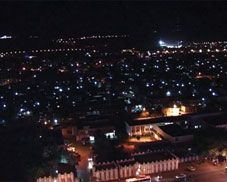
Stéphane Pichard
Comme de jour
Art vidéo | dv | color | 1:55 | France, Mali | 2006
Let's start by closing our eyes. The 4/3 vertically divided screen teems with black and white pixels. There is something intense that we confusingly perceive in the breath and the noise. Progressively the pixels are going to diminish, most likely in favour of the little scene of a character. It is a short-cut and an extraction, a numeric zoom becoming optics, always in the rear. Like a vast inspiration, the city of Bamako grows at night, its lungs filled with heat and dust. " ...The picture is the result of an operation whose viewing is an instrument and not the preamble."* *Philippe-Alain Michaud, Sketches, page 67, Kargo and L'Eclat editions.
Stéphane Pichard was born in Nanterre in 1968. In 1993 he graduated from the ENSBA in Paris. He continued his studies at the University of British Columbia, Vancouver, Canada, completing a Master in Fine Arts. He then pursued research at Paris VIII and at the INA. He subsequently participated in several exhibitions in France and abroad. As a professor of plastic arts, he developed the residency program "Synapse" at the ESA in Rueil-Malmaison.
Catalogue : 2006Répétition pour caméra et tablas | Art vidéo | 0 | color | 3:0 | France | 2005
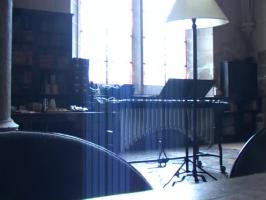
Stéphane Pichard
Répétition pour caméra et tablas
Art vidéo | 0 | color | 3:0 | France | 2005
Guillermina Pico
Catalogue : 2025Todo nuevo | Fiction | 4k | color | 35:0 | Argentina | 2023
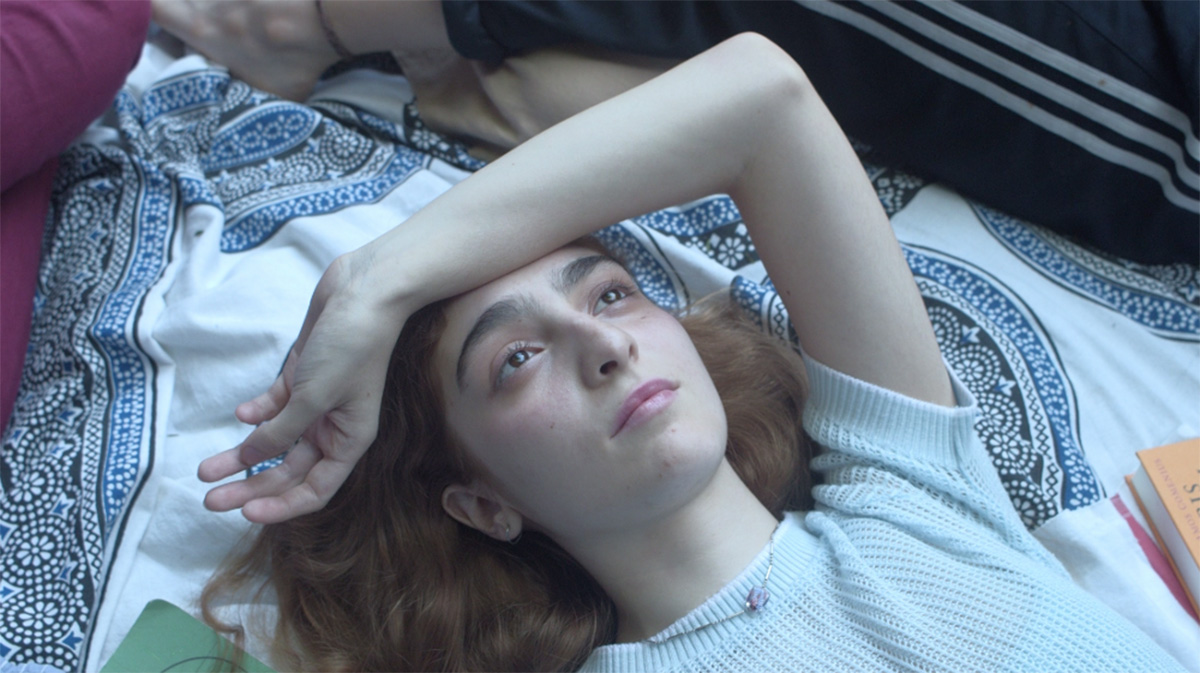
Guillermina Pico
Todo nuevo
Fiction | 4k | color | 35:0 | Argentina | 2023
Julia is a teenager about to finish school struggling to stay afloat in a sea of expectations and confusion.
Guillermina Pico is a film director and writer. Her work as a director has been exhibited and awarded in national and international film festivals such as BAFICI (Best Short Film and Audience Award), DOCUMENTA Madrid, L'Alternativa, Festifreak, Kinoforum Sao Pablo (Special Mention), Cinemateca Uruguaya, Lima Film Festival, Chile, Quito, Cali, Galicia, TFF Torino, DiBa Festival (Best Short Film) and art venues such as Palais de Glace Buenos Aires, Centro Cultural Recoleta and Bienal Buenos Aires (Talent Campus Award) among others. Her first feature film "Borrá todo lo que dije del amor porque no sabía bien quién era" was premiered at Torino International Film Festival and was awarded in the audiovisual contest of the Fondo Nacional de las Artes. Among the institutions that supported her work are the Fondo Nacional de las Artes, Talent Campus Buenos Aires, Fundación Proa Cine, Fondo Metropolitano de las Ciencias y las Artes, NOVOS CINEMAS#LAB, Galicia. She is currently developing the documentary Las Galaxias (INCAA) and the fiction Todo Nuevo. She combines her artistic work with teaching and online consulting. Born and raised in Santa Rosa, La Pampa, she lives and works in Buenos Aires.
Leighton Pierce
Catalogue : 2022Everything s gonna be OK | Video | 4k | color | 6:37 | USA | 2021
Leighton Pierce
Everything s gonna be OK
Video | 4k | color | 6:37 | USA | 2021
This is a part of a developing series titles UAP (Unidentified Arial Phenomena). Looking to the sky can reveal both threats and salvation. This was shot and edited on a phone and is intended eventually to be presented on the intimate format of a phone. Shot and edited in summer 2021.
Pierce has been making films, video, and installations for over 3 decades with screenings at Cinematheque francais, Pompidou Center, Sundance, NYFF, Rotterdam, EMAF ad many other venues. Among others, he is recipient of Guggenheim, Rockefeller, and Creative Capital Fellowships. For the past 8 years he has been living in LA where he was dean and is now faculty at CalArts.
Leighton Pierce
Catalogue : 2023Lodestar | Experimental video | mobile phone | color | 13:42 | USA | 2022
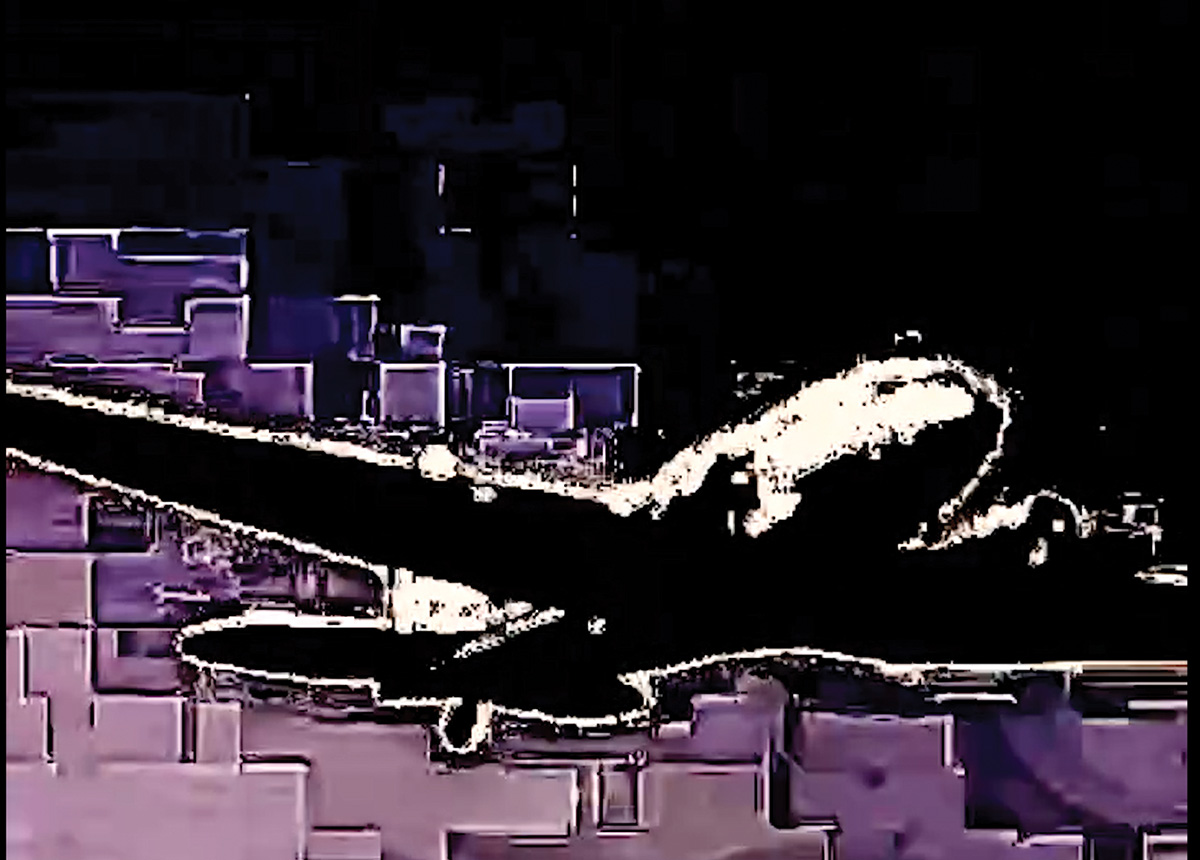
Leighton Pierce
Lodestar
Experimental video | mobile phone | color | 13:42 | USA | 2022
LODESTAR Leighton Pierce Pierce has recently created hundreds of short reflective loops to stimulate subtle alterations in states of mind. He shoots and processes them entirely on his phone in order to bring the active video "meaning-making" process into his daily lived experience. His camera (and NLE) is always in his pocket. Lodestar takes advantage of synergies and leaps among some of these loops and then extends them toward proto-narrative --the moment when an objective narrative is first detected. Sound is integral to the potential for an in-depth experience during this 13 minute video. Slow transformations and repetitions with subtle variations are explicitly invoked through both image and sound to soften the rational sense-making that we are usually immersed in. Lodestar could be an inducement to trance--but not only trance. I suggest watching it with attention and patience and with a minimum of narrative expectation.
Leighton Pierce Bio Leighton Pierce is an artist and a committed educator grounding his work in an examination of how one can use art, or video and sound in his case, to explore the fringes of narrative, the seeds of cognition, and the thresholds of perception. He takes an holistic approach to video making and video installations embracing all aesthetic/technical aspects as an entangled web of symbiotic relationships. His work has been widely screened at over 500 film festivals with numerous awards and accolades. His major multi-channel video installations, designed to de-objectify the video viewing experience, have been presented at the Sundance Film Festival, the Kochi (India) Biennial, the Ann Arbor Film Festival, the University of Iowa Museum of Art, and the Sheldon Museum of Art; his film and video work has also been screened at museums including the Whitney Biennial, Pompidou Museum, and MOMA in addition to hundreds of festival screenings. He is a recipient of grants/fellowships from Creative Capital, the NEA, the Guggenheim Foundation, and the Rockefeller Foundation.
Romain Pierre
Catalogue : 2014Taverne Française | Fiction | hdv | color | 7:23 | France | 2013
Romain Pierre
Taverne Française
Fiction | hdv | color | 7:23 | France | 2013
Taverne Française est d`abord un espace, physique et social, comprenant des murs et des possibles. Son vocabulaire pourrait être d`aujourd`hui, sa musique d`hier, son énergie celle de la jeunesse. Ce n`est pourtant pas l`analyse d`une époque ni le portrait d`une génération. Peu importe la taverne, c`est une taverne : on y sent l`urine, l`alcool et la sueur, on y parle de désir et de mort. Il ne pourrait pas s`agir d`autre chose, car c`est précisément toutes les autres choses qui sont en jeu. Les corps ne connaissent pas d`histoires ; la seule histoire s`inscrit entre les corps. Dès lors qu`il n`y a plus de jugements de valeur, le besoin ne se distingue pas de l`ennui, ni la cruauté de la tendresse, et dans ce délire, sans humour ni gravité, se trame le délire du monde. On ne délire pas sur une affaire personnelle mais, comme le dit Deleuze de l`inconscient, "sur les races, les tribus, les continents, l`histoire et la géographie, toujours un champ social". Et la parole de corps désaffectés, si elle n`est pas la parole des morts, ressemble bien à celle de l`inconscient.
Romain Pierre est né en 1989 à Paris. Il suit une formation de comédien à l`école supérieure d`art dramatique du Théâtre National de Strasbourg. En 2013, il écrit et réalise son premier court-métrage, Taverne Française, inspiré de l`oeuvre de Georges Bataille et des Velvet Underground.
Bartolomeo Pietromarchi
Catalogue : 2007Fluid Cities | Documentary | dv | color | 32:47 | Italy | 2004
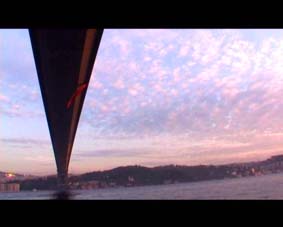
Bartolomeo Pietromarchi
Fluid Cities
Documentary | dv | color | 32:47 | Italy | 2004
Fluid Cities covers the third phase of "Trans": it?s project research as conducted in the Mediterranean area. Produced in 2004, it investigates the projects for public space developed by artists active in Athens, Istanbul, and Cyprus, showing a particular interest in traditions and local culture, manifest in the light of globalisation pressures arriving from the world at large. The context, an open field in which artistic expressions and social experiments are closely connected, is fundamental to an understanding of the work of artists involved in a territory marked by rapid urban, social and economic transformations. The cities have been transformed into multicultural laboratories. Migratory flows, collective memories and spaces undergoing rapid change have given form to the concept of fluidity, a characteristic common to various territories and demonstrative of the continual, rapid, and growing process of transformation to which the urban context is subject. Here, the concept of community is not understood only as a process of collective history but is seen from the micro-social point of view according to which the extended family and its traditions are the field of intervention for contemporary culture. Contemporary art acts within a sort of "public intimacy" through which the subjects represent themselves. The concept of the private is therefore not understood as absolutely contrary to the concept of the public but rather is mediated through the legacy with which the community -the family within, that is, expresses itself to the outside world. Multicultural society in these countries is not the result of globalisation but rather belongs historically to the very genetic code of each country. It is the result of living together and of conflict between ineliminable cultural and religious differences. The documentary film was realized within the European cultural project: "Trans:it. Moving Culture through Europe" promoted by Fondazione Adriano Olivetti in collaboration with European Cultural Foundation, Fondation Evens, Fondation de France and The J.F. Costopoulos Foundation.
Bartolomeo Pietromarchi was born in 1968 in Rome, and is currently a critic and a curator. Since 1997 he has been directing the program of contemporary art for the Fondazione Adriano Olivetti in Rome. He was nominated General Secretary of the Foundation in 2002. Filmography: Director of the cycle of documentary films realized within the project "Trans:it. Moving Culture through Europe": "The Invisible Community", documentary film, 2003, Italy. "Ruins for the Future", documentary film, 2004. "Fluid Cities", documentary film, 2004, Italy.
Stéphanie Pihery
Catalogue : 2006L'hopital du Dr. Galmo | Documentary | betaSP | color | 3:30 | Canada | 2004
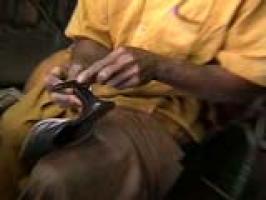
Stéphanie Pihery
L'hopital du Dr. Galmo
Documentary | betaSP | color | 3:30 | Canada | 2004
In Niamey, Doctor Galmo is the director of an extraordinary hospital. The patients who are convalescing are not who you think they are.
Vaughan Pilikian
Catalogue : 2009Household Gods | Experimental fiction | 16mm | color | 6:30 | United Kingdom | 2008
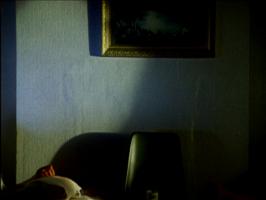
Vaughan Pilikian
Household Gods
Experimental fiction | 16mm | color | 6:30 | United Kingdom | 2008
Alone at home, but haunted by other voices: six people is six rooms somewhere in London.
Vaughan Pilikian is a writer, director and artist who lives in London. His short films have screened in festivals around the world, and he is currently at work on his first feature.
Michael Pilz
Catalogue : 2006Across the river | Documentary | betaSP | color | 151:0 | Germany, Zimbabwe | 2004
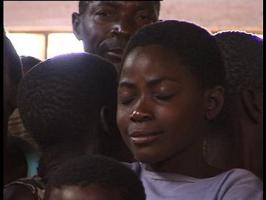
Michael Pilz
Across the river
Documentary | betaSP | color | 151:0 | Germany, Zimbabwe | 2004
Across the River is a documentary focusing on the cultural exchange that took place when the Tonga music ensemble \"Simonga\" and people living in the village of Siachilaba near Zimbabwe\`s Lake Kariba met a group of Austrian musicians and composers. It highlights the cultural strength and resistance of the Tonga people.
Joana Pimenta
Catalogue : 2015AS FIGURAS GRAVADAS NA FACA COM A SEIVA DAS BANANEIRAS | Experimental doc. | 16mm | color | 16:30 | Portugal | 2014
Joana Pimenta
AS FIGURAS GRAVADAS NA FACA COM A SEIVA DAS BANANEIRAS
Experimental doc. | 16mm | color | 16:30 | Portugal | 2014
The rapid turning of a light draws a circle. In the space bound by its line unravels an archive of postcards sent between the island of Madeira and the former Portuguese colony of Mozambique. The figures carved into the Knife by the Sap of the Banana Trees circulates between a fictional colonial memory, and science-fiction.
Joana Pimenta (b. 1986, Lisbon) works in film and video installation. Her work has been recently presented at the Carpenter Center for the Visual Arts, Fundacion Botin, Galeria da Boavista, R4, and The Pipe Factory. Her short film "The Figures Carved into the Knife by the Sap of the Banana Trees" received the Pixelbunker Award for Best Short Film in the National Competition at Indielisboa `14, where it premiered, and has been selected for the Toronto International Film Festival (Wavelenghts)and the New York Film Festival (Projections, former Views of the Avant-Garde). She is a Teaching Fellow and PhD candidate in the Department of Visual and Environmental Studies at Harvard University, a fellow at the Film Study Center, and is pursuing her MFA in Film/Video at the Milton Avery School of the Arts at Bard College. She lives and works in Lisbon and Brooklyn, NY.
Antoni Pinent
Catalogue : 2010FILM QUARTET / POLYFRAME | Experimental film | 35mm | color and b&w | 9:0 | Spain | 2008
Antoni Pinent
FILM QUARTET / POLYFRAME
Experimental film | 35mm | color and b&w | 9:0 | Spain | 2008
FILM QUARTET / POLYFRAME is conceived as a small cinematographic bomb attempting to question the established definition of frame as the minimum unit of (cinematographic) time by dynamiting it in four fragments. A step further in the so-called sub-genre practice of found footage film -recycled material- is also put forward for consideration in this project. The appropriationism applied in this work makes use of material found in Hollywood cinema (Singin?in the rain, Stanley Donen, 1952); Pink Panther; Buster Keaton; etc., the first avant-garde period (Un chien andalou, Luis Buñuel & Salvador Dalí, 1929) and American experimental film (Wavelength, Michael Snow, 1966-1967). Such method makes possible, therefore, to maintain image ecology while it provides an analysis of the history of cinema. An explosive artifact has been inscribed as cinematographic notation on musical staffs in order to facilitate the interpretation and development of the piece beyond its mere projection. Such being the case, unchanging cinematographic would pushed for their reinvention-destruction-explotion. This piece celebrates the 50th anniversary of A Movie (1958), by Bruce Conner (1933-2008).
Pink Twins
Catalogue : 2009Pink Twins Live | 0 | 0 | | 30:0 | Finland | 2008
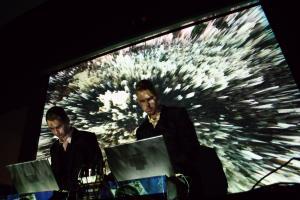
Pink Twins
Pink Twins Live
0 | 0 | | 30:0 | Finland | 2008
Pink Twins work on the crossing of visual art and music. Their computer-treated imagery and sound, often processed on selfmade software, focus on human perception, its functionality and limits. For their live performances Pink Twins incorporate live electronic music and a live mix of video works. The music of Pink Twins is based on improvised live sound processing of concrete and electronic sounds, noises and musical elements. The mix of live sound and video projections creates a hyperactive, constantly changing and extremely detailed experience of time and space.
Pink Twins (musicians and video artists, brothers Juha and Vesa Vehviläinen from Helsinki, Finland) build a tissue of connections between their sound work and their visual work, attempting to intimately join together mundane fragments usually disjoint. They work from fragments of images, sounds and sensations which our daily life is subjected to in order to break them down into small particles and reunite them once again in audacious constructions formed from chaos, pulverising and rendering them abstract, according to a unified artistic sensitivity. Their concerts are surprising chromatic combinations with strong sonic collusions which correspond to a deep need, with nothing superfluous. Active since 1997, Pink Twins have played their music to audiences in Europe, Asia and Americas, in festivals, art museums, clubs, churches and outdoor events, and displayed their video works on all continents.
Catalogue : 2006Box | Experimental video | dv | color | 8:0 | Finland, Fiji | 2004

Pink Twins
Box
Experimental video | dv | color | 8:0 | Finland, Fiji | 2004
Box is based on photographs from Tunguska, Siberia, where a large area of land was destroyed when a huge meteorite exploded above the ground in 1908. The video is a slow composition, where landscape images go through several stages of transformation. The video material which was further developed into "Box" was originally made for a stage version of Stalker, produced by Circus Maximus at Helsinki City Theater in 2003.
The Finnish duo Pink Twins, the brothers Vesa and Juha Vehviläinen, started to work together in 1997. Since then they have been exploring visual and sonic noise combined in a most physical experience. Sampling the everyday images and tearing them apart to pixels then putting them together again to a chaotic and blasting unity. In Pink Twins` music and video works "the logical and analytic thematic developments surrender to the frenetic and non-repetitive information overflow.
Pink Twins
Catalogue : 2011Defenestrator | Experimental video | dv | color | 8:30 | Finland | 2008
Pink Twins
Defenestrator
Experimental video | dv | color | 8:30 | Finland | 2008
A spectacle of grandiose spaces, monumental halls and majestic architecture. Overpowering architectural constructions disintegrate, deform and transform into a flowing stream of lava, creating new distorted spaces as building blocks of a new order.
Pink Twins, brothers Juha (b.1978) and Vesa Vehviläinen (b.1974) are Helsinki-based visual artists and musicians working with digital music and video. The video works by Pink Twins are usually processed on Framestein, a video software developed by Juha, and combined to a soundtrack of Pink Twins music. Live Pink Twins deliver improvised digital soundscapes, often with video screenings.
Catalogue : 2007Live Paris Villette | Performance | 0 | color | 40:0 | Finland | 2006
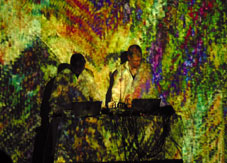
Pink Twins
Live Paris Villette
Performance | 0 | color | 40:0 | Finland | 2006
Pink Twins is a duo of musicians and video artists, brothers Juha and Vesa Vehviläinen from Helsinki, Finland. Active since 1997, Pink Twins have played their music to audiences in Europe and Asia, in festivals, clubs, art museums, churches and outdoor events. Based on improvisation and the brothers` symbiotic collaboration, music of Pink Twins is a chaotic whole of intense soundbursts, melodies and infinitely detailed sounds. In their concerts Pink Twins create a constantly changing multilayered wall of sound and aim for a physical, mental and spatial experience. Pink Twins often incorporate video projections to their concerts. Mostly created with their self-made software, the video works are abstract and painterly, from formal compositions to extremely fast shapeless pixelstorms.
Pink Twins is a duo of musicians and video artists, brothers Juha and Vesa Vehviläinen from Helsinki, Finland. Active since 1997, Pink Twins have displayed their video works and played their music to audiences in Europe and Asia, in festivals, art spaces, clubs, churches, and outdoor events. Mostly created with their self-made software, Pink Twins' video works are abstract and painterly, from formal compositions to extremely fast shapeless pixel storms. Music of Pink Twins, based on improvisation and the brothers' symbiotic collaboration, is a chaotic whole of intense soundbursts, melodies, and infinitely detailed sounds. In their concerts, Pink Twins create a constantly changing multi-layered wall of sound, and aim for a physical, mental, and spatial experience. The live music is normally accompanied by video projections. During 2005 and 2006 Pink Twins performed actively in Europe and Asia. Their most notable performances have been the Venice Biennial Music Festival and a tour in China. Pink Twins has also had several solo and group exhibitions, for example, in Sweden, Luxembourg, China, and Mongolia. Pink Twins have released five CDs on their own label Pink Twins Media. A double DVD compilation will have been released in late 2006.
Catalogue : 2007Splitter | Experimental video | dv | color | 6:0 | Finland | 2006
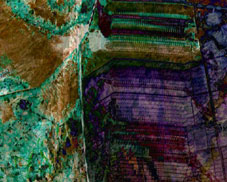
Pink Twins
Splitter
Experimental video | dv | color | 6:0 | Finland | 2006
"Splitter" is a macrocosmos of interleaving streams of colour, a digital mass of endlessly transforming surface. Created from simple satellite photos and transformed into a richly detailed, multi-layered landscape, the static motion of "Splitter" creates a sacramental space that carries the layers of our perception and consciousness.
Pink Twins is a duo of musicians and video artists, brothers Juha and Vesa Vehviläinen from Helsinki, Finland. Active since 1997, Pink Twins have displayed their video works and played their music to audiences in Europe and Asia, in festivals, art spaces, clubs, churches, and outdoor events. Mostly created with their self-made software, Pink Twins' video works are abstract and painterly, from formal compositions to extremely fast shapeless pixel storms. Music of Pink Twins, based on improvisation and the brothers' symbiotic collaboration, is a chaotic whole of intense soundbursts, melodies, and infinitely detailed sounds. In their concerts, Pink Twins create a constantly changing multi-layered wall of sound, and aim for a physical, mental, and spatial experience. The live music is normally accompanied by video projections. During 2005 and 2006 Pink Twins performed actively in Europe and Asia. Their most notable performances have been the Venice Biennial Music Festival and a tour in China. Pink Twins has also had several solo and group exhibitions, for example, in Sweden, Luxemburg, China, and Mongolia. Pink Twins have released five CDs on their own label Pink Twins Media. A double DVD compilation will have been released in late 2006.
Catalogue : 2007Splitter 2 | Experimental video | dv | color | 10:0 | Finland | 2006
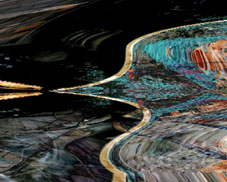
Pink Twins
Splitter 2
Experimental video | dv | color | 10:0 | Finland | 2006
"Splitter 2" is an abstract sci-fi epic, where satellite photos from the surface of planet earth are reformed into a cosmic stream. "Splitter 2" shows a static, frozen, transforming, and moving space in which matter, light, and colour are interleaved with the darkness of the void to create a new universe.
Pink Twins is a duo of musicians and video artists, brothers Juha and Vesa Vehviläinen from Helsinki, Finland. Active since 1997, Pink Twins have displayed their video works and played their music to audiences in Europe and Asia, in festivals, art spaces, clubs, churches, and outdoor events. Mostly created with their self-made software, Pink Twins' video works are abstract and painterly, from formal compositions to extremely fast shapeless pixel storms. Music of Pink Twins, based on improvisation and the brothers' symbiotic collaboration, is a chaotic whole of intense soundbursts, melodies, and infinitely detailed sounds. In their concerts, Pink Twins create a constantly changing multi-layered wall of sound, and aim for a physical, mental, and spatial experience. The live music is normally accompanied by video projections. During 2005 and 2006 Pink Twins performed actively in Europe and Asia. Their most notable performances have been the Venice Biennial Music Festival and a tour in China. Pink Twins has also had several solo and group exhibitions, for example, in Sweden, Luxemburg, China, and Mongolia. Pink Twins have released five CDs on their own label Pink Twins Media. A double DVD compilation will have been released in late 2006.
Catalogue : 2006Pink Twins Live | performance | | | 35:0 | Finland | 2005

Pink Twins
Pink Twins Live
performance | | | 35:0 | Finland | 2005
Pink Twins are brothers Juha and Vesa Vehviläinen from Helsinki. Their music and video work is a constant mass flow of abstract, electronic and concrete sound and visuals, where the logical and analytic thematic developments surrender to the frenetic and non-repetitive information overflow. The concert is a dynamic, improvised epic that follows an organic logic to build a dramatic unity out of seemingly opposing movements. The performance is backed by a live mix of Pink Twins` video works.
Pink Twins (brothers Juha and Vesa Vehvilainen from Helsinki) have been working together since 1997. Working as computer musicians and video artists, Pink Twins perform live as well as show video and sound installations in exhibitions.
Jörg Piringer
Catalogue : 2006SIG/B | Experimental video | dv | color | 2:0 | Austria | 2005

Jörg Piringer
SIG/B
Experimental video | dv | color | 2:0 | Austria | 2005
Jörg Pringler est né en 1974, et vit actuellement à Vienne en Autriche. Pringler est membre de l´institut pour la recherche trans-acoustique et du vegetable orchestra (l´orchestre de légumes/das erste Wiener gemüseorchester). Il a étudié à la Schule für Dichtung à Vienne, et a obtenu un Mastère en informatique. On peut le considérer comme un poète du son.
Sasha Pirker, Lotte Schreiber
Catalogue : 2016Exhibition Talks | Experimental doc. | 16mm | black and white | 9:0 | Austria | 2014
Sasha Pirker, Lotte Schreiber
Exhibition Talks
Experimental doc. | 16mm | black and white | 9:0 | Austria | 2014
Wenn, wie Walter Benjamin behauptet hat, Gebäude auf doppelte Art, durch Gebrauch und Wahrnehmung rezipiert werden, d.h. taktil und optisch, dann könnte man Sasha Pirkers und Lotte Schreibers Exhibition Talks als Versuch verstehen, diese doppelte Rezeptionsweise ein Stück weit zu entkoppeln. Während auf der Tonspur vom Gebrauch der Ausstellungsräume des Tiroler Architekturforums aut die Rede ist, von den Gegebenheiten der einzelnen Räume und den Möglichkeiten, sie für eigene Bedürfnisse zu adaptieren, liefert die Bildspur fragmentarische, statische und in Schwarzweiß gehaltene Ansichten derselben Räume, die allein schon deshalb im optischen Register verharren, weil sie über die Montage zu keinem kohärenten Raumganzen verbunden werden. Anstatt die Größe der Räume und ihre gebaute Anordnung etwa über einen Rundgang durch das Gebäude zu "erzählen", fängt die Kamera Details der Fassade und der Innenräume ein, die zum einen mit ihren klar gezogenen Linien und den vielfältigen Gelegenheiten zu Ein-, Aus- und Durchblicken von der Formensprache der klassischen Moderne zeugen, zum anderen diese Formensprache einem optischen Spiel von Licht und Schatten, von Grauwerten und Schwarzweiß aussetzen, das die drei Dimensionen des Bauwerks grafisch auflöst. Bestand die Pointe der doppelten Rezeptionsweise von Gebäuden bei Benjamin in der Übertragung auf die Wahrnehmungsbedingungen am Ort des Kinos (Zerstreuung statt Kontemplation), scheint die experimentelle Entkopplung von optischer Wahrnehmung und taktilem Gebrauch in Exhibition Talks einer anderen Logik zu folgen. Obwohl vom Bild strikt getrennt, suchen die Möglichkeiten des Gebrauchs nach Wegen ins Sichtbare. "Normalerweise ist der Eingang hier": Zu sehen ist eine Öffnung, durch die Licht auf eine Wand fällt, während der übrige Raum im Schatten versinkt. Die Öffnung ist ein Fenster, sie könnte aber auch eine Tür sein bzw. ist sie gerade im Begriff, zu einer solchen zu werden. Von solchen Übergängen handelt Exhibition Talks: vom Offenen, vom Beweglichen und Veränderlichen des gebauten Raums. (Vrääth Öhner)
Sasha Pirker
Catalogue : 2014Paperwork | | | | 15:0 | Austria | 2013
Sasha Pirker
Paperwork
| | | 15:0 | Austria | 2013
Factory and office?these two architectural poles characterize Sasha Pirker?s Paperwork. On the one hand is the paper factory in the Italian town of Verzuolo whose largely automated processes the film captures in its first and final thirds in mainly static takes. On the other hand, Paperwork leads us into, around, and through the company headquarters of the Burgo Group, located in San Mauro near Turin, whose production sites include the aforementioned paper factory. The administrative building, which has largely been preserved in its original state, was built in the late 1970s according to plans drawn up by Oscar Niemeyer, a star architect in today?s terms. The building sits in the landscape like an elegant, curved, circular space ship, bearing witness to an era in which the administrative and service sector began to overtake industrial work.
Born in Vienna in 1969. Studied Linguistics. Artist and Filmmaker.Born in 1969 in Vienna, studied linguistics. Teaches at the Academy of Fine Arts Vienna. Video and video installation THINKING THE FORM at the Viennale in 2011. Sasha Pirkeris not just a filmmaker but a philosopher of space: Her architectural explorations of public and private buildings by eminent architects, such as Lautner, Schindler and Niemeyer aren?t documentaries on buildings but dialogues with these structures? social, political and societal dimensions. Pirker?s close look at detail speaks for the whole: with a downright affectionate understanding of space, she looks out from the inside (less often the other way round), foregoes the big picture of overall views for a gaze into interiors, as if into the bowels of utopias and sanctuaries cast in stone. The power of her films is frequently due to the interplay of images and sounds, when, for instance, the weird and wonderful stories told by people off camera make the architectural space come alive with astonishing tales.
Sasha Pirker
Catalogue : 2013THE FACE - Storefront for Art & Architecture | Video | 16mm | color | 4:30 | Austria, USA | 2011
Sasha Pirker
THE FACE - Storefront for Art & Architecture
Video | 16mm | color | 4:30 | Austria, USA | 2011
The face is usually the expressive surface which marks a person`s identity. "Face" does not, however, just refer to the human face, but could also mean the face of a building: the façade that "adorns" a building. In Sasha Pirker`s so-named short film, shot on 16 mm using a hand-held camera, these two meanings come at one another from diametrically opposed positions. On one hand Pirker is trying to show the building as a whole, plucking out individual fragments in an entirely subjective manner; fragments which the viewer then has to piece together. One clue to this interpretation is a quote by the artist Birgit Baldasti which flashes up right at the start: "If I was a poet I?d say that pleasure lies in other people refining your own imagination." On the other hand Pirker selects the clips of the building such that the individual faces of the passers-by remain hidden. In THE FACE all entities, both architectural and human, exist without their primary identifying feature: their face. Metaphorically only the eyes, mouth, nose and ears of the architecture can be seen, while people are generally cut off, or are filmed in silhouette from behind. The framing means that each image in the film just shows a clipping: here, there is no longer any suggestion of anything being shown as a whole. In Sasha Pirker`s view, the architectural elements are also given sculptural accents. At the same time, Pirker juggles with views from within and without, bringing out the limited, snippet-like view and precisely thus firing the imagination. Almost incidentally she also succeeds in connecting the gallery space and the street ? the primary aim of the two men of action Vito Acconci and Steven Holl when they renovated the façade of the Storefront for Art and Architecture (NYC) in 1993. (Dietmar Schwärzler) Translation: Anne Koth
Sasha Pirker, artist/filmmaker, born 1969 in Vienna, Austria. Studies in Linguistics in Vienna/Austria. From 1995-2000 she worked as a curator of contemporary architecture at the Architecture Center Vienna (Az W). Since 2006 she is a teaching member at the department ?Video and Videoinstallation? at the University of Fine Arts in Vienna, Austria. Her films are distributed by sixpackfilm Vienna, www.sixpackfilm.com (selection) 2011 Retrospective ?Philosopher of Space? at the VIENNALE - Vienna International Filmfestival 2010 67. Mostra Internazionale d?Arte Cinematografica, La Biennale di Venezia/I
Catalogue : 2012The future will not be Capitalist | Documentary | 0 | color | 19:16 | Austria, France | 2010
Sasha Pirker
The future will not be Capitalist
Documentary | 0 | color | 19:16 | Austria, France | 2010
At the end of the 1960s, when there was still a future, Oscar Niemeyer, living in France, designed the headquarters of the French Communist Party. Sasha Pirker`s film studies the relationships between this building, with its futuristic qualities, and the contemporary situation of political projects, economic realities and aesthetic attitudes. The cinematic means employed are chosen so as to provide various ways of viewing this unusual building as a physical space, an institution or a historical document, thus looking into its aesthetic effect, its practical use or its political and symbolic meaning. The Future will not be Capitalist alternates between sober insights into the everyday working life of those employed at the party headquarters and shots which make reference to the modernist effect of the shapes and materials of Niemeyer`s building. Off-camera, comments and memories related by the administrator of the headquarters lead the viewer through the building, painting a picture of the current politics of a shrunken party constantly reminded of its ideal state by its magnificent headquarters. Text: Christian Kravagna (Translation: Anne Koth)
Born in Vienna in 1969. Studied Linguistics, Artist and Filmmaker.
Catalogue : 2010Once at Miracle Mile | Experimental doc. | dv | color | 9:10 | Austria | 2009
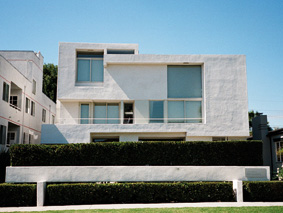
Sasha Pirker
Once at Miracle Mile
Experimental doc. | dv | color | 9:10 | Austria | 2009
?Once at Miracle Mile? The Pearl M. Mackey Apartment House in Los Angeles, built in 1939 by Rudolph M. Schindler, is completely compelling to Sasha Pirker. In her work, she doesn?t strive to merely capture architecture on film, nor to simply record and document what she sees, but rather to work with the building itself (albeit in a restrained and respectful way), indeed to map it. Intriguingly, Sasha Pirker takes what would seem awkward in a conventional feature film and makes it her own: the idiosyncratic use of cross dissolves in this short film becomes in fact its main stylistic principle, and ? stunningly ? it works. In ?Once at Miracle Mile,? several calm, steady and yet at times even hesitant circular camera pans are intertwined, playing with the gaze and the expectations of the audience. Into the background of one pan enters a second, although this one refuses to displace the first ? at least not initially ? but rather, the two camera pans exist simultaneously, allowing the viewer?s attention to move between the coming and going of the images, jumping ? no, gliding ? back and forth. A slow-motion dance through the building, a dance with the building, a fusion of inside and out, a simultaneity of views ? as if we were passing the house and just happened to catch a glimpse of ourselves in one of the windows. Why not? Everything is possible at Miracle Mile on this mild Californian afternoon. This film is a declaration of love, made with solemn and tender affection for the house it?s also a remembrance of: Once ? (Bernhard Seiter) Translation: Janet Grau
Sasha Pirker, artist, born 1969 in Vienna/Austria. Studied linguistics and architecture in Vienna. She lives in Vienna. Since 2006 she is a teaching member of the department ?Video and Videoinstallation? at the University of Fine Arts in Vienna.